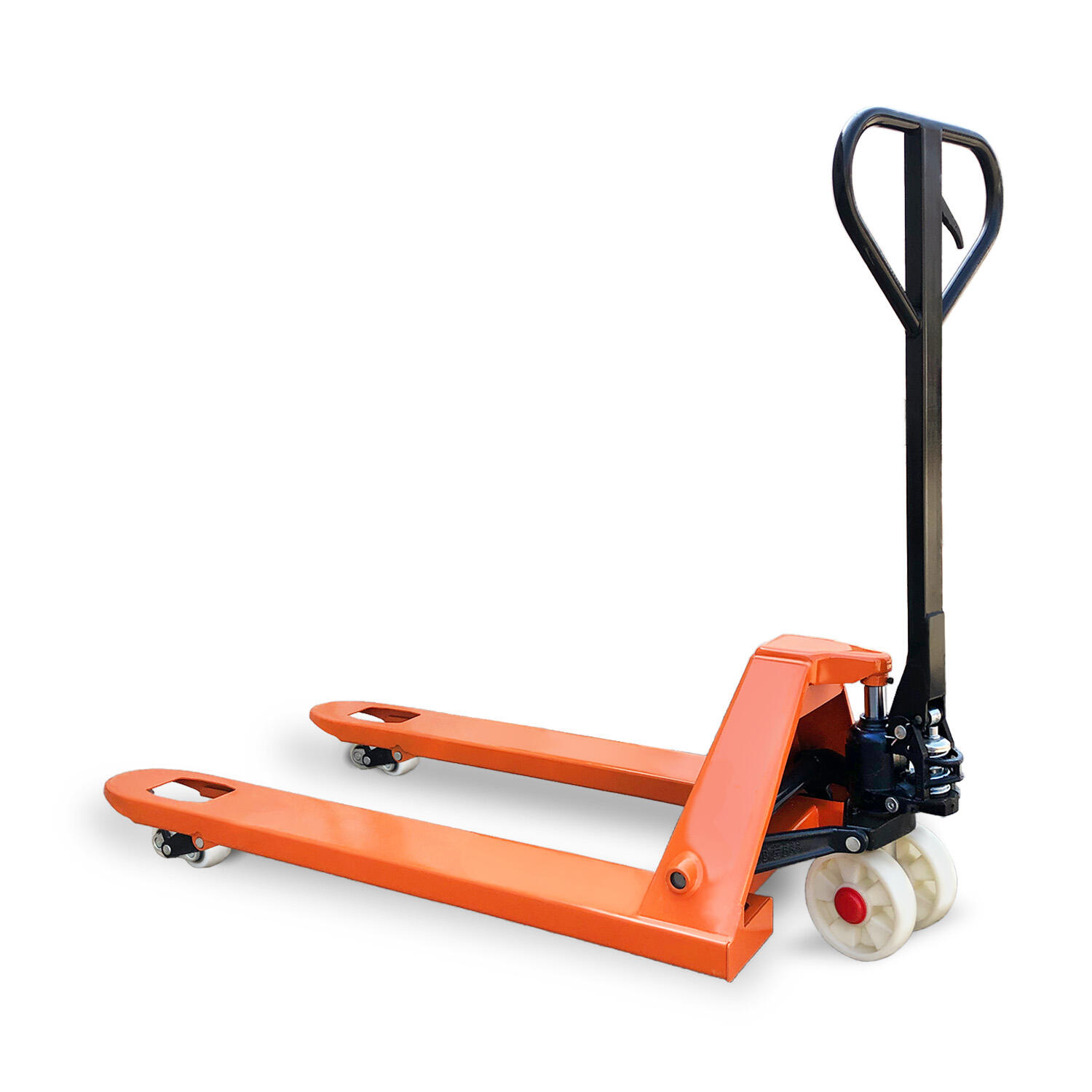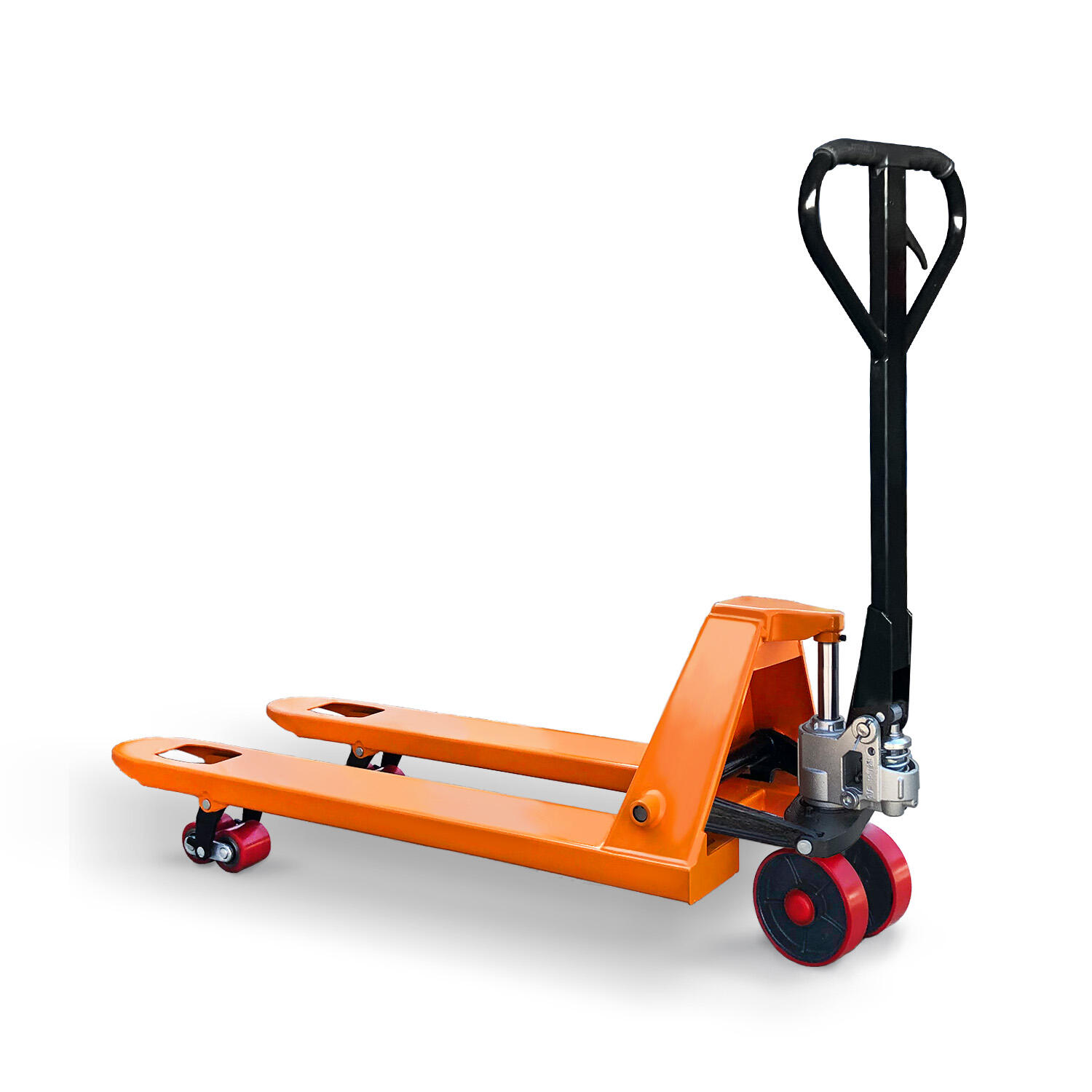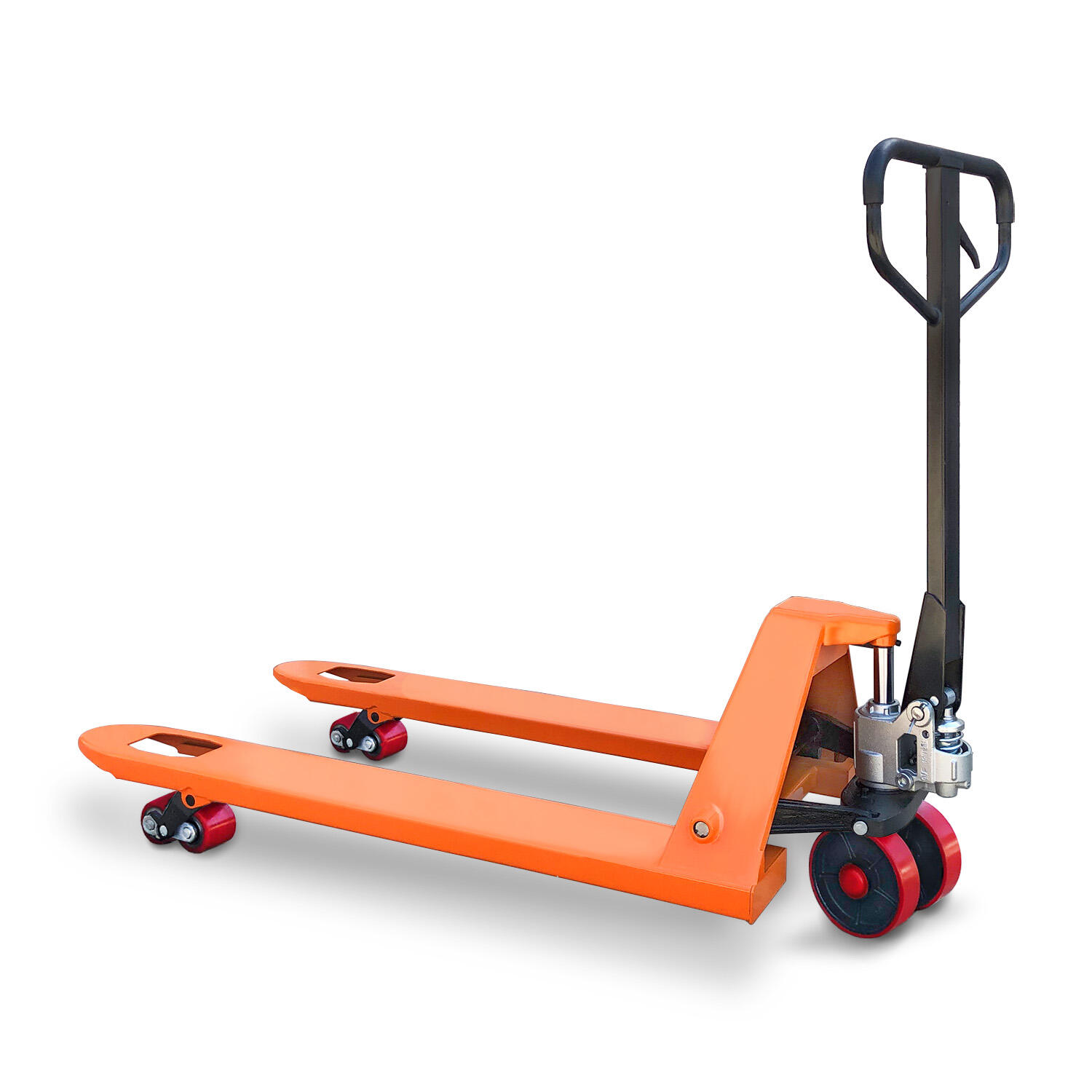A manual electric pallet jack, often referred to as a semi-electric pallet jack, is a hybrid material handling device that combines the simplicity of manual operation for movement with electric power for lifting, offering a balance between cost-effectiveness and efficiency. This innovative design makes it an ideal solution for businesses that need to lift pallets to moderate heights while still requiring the maneuverability of a manual jack for transportation. It is widely used in warehouses, retail stores, distribution centers, and manufacturing facilities where the volume of material handling tasks demands more power than a fully manual jack but does not justify the expense of a fully electric pallet jack. At the core of a manual electric pallet jack is its dual-operation system: the lifting and lowering functions are powered by an electric motor, while the movement of the jack is handled manually by the operator. This separation of functions reduces the physical strain on operators, as the most demanding task—lifting the load—is powered, while the less strenuous task of moving the jack remains manual. The electric lifting mechanism is powered by a rechargeable battery, typically a lead-acid or lithium-ion battery, which provides the necessary energy to raise the forks with the simple press of a button. This eliminates the need for manual pumping, which is the most physically taxing part of operating a fully manual pallet jack, making the manual electric version more ergonomic and reducing the risk of operator fatigue and injury. The lifting capacity of a manual electric pallet jack varies, but most models can handle loads ranging from 1.5 tons to 3 tons, with lifting heights typically between 100mm and 200mm, though some models can lift higher for specific applications. The electric lifting system is controlled by a simple switch or button panel located on the handle, allowing operators to raise or lower the forks with precise control. This precision is crucial for positioning pallets accurately on shelves, in trucks, or in storage racks, reducing the risk of damage to goods or equipment. The lowering function is often controlled by a separate valve or button, ensuring that loads are lowered slowly and smoothly, even when the battery is running low. The battery is a key component of the manual electric pallet jack, and its capacity determines the operational runtime. Lead-acid batteries are traditional and cost-effective, but they are heavier and require longer charging times, typically 8-10 hours. Lithium-ion batteries, on the other hand, are lighter, charge faster (usually 2-4 hours), and have a longer lifespan, making them a popular choice for businesses that require more frequent use. Most models are equipped with a battery level indicator on the handle, allowing operators to monitor the remaining charge and avoid unexpected downtime. Some jacks also feature a built-in charger, making it convenient to recharge the battery when not in use without the need for a separate charging station. The construction of a manual electric pallet jack is designed to support its hybrid operation while maintaining durability and stability. The frame is typically made from high-strength steel, providing a sturdy base that can withstand the weight of heavy loads and the stresses of daily use. The steel components are often treated with anti-corrosion coatings to resist rust, ensuring a long lifespan even in humid or dusty environments. The forks, made from reinforced steel, are designed to securely hold pallets, with some models offering adjustable fork widths to accommodate different pallet sizes or non-palletized items. The mast, which supports the lifting mechanism, is constructed from heavy-gauge steel or aluminum alloy, balancing strength with weight to ensure stability during lifting without making the jack too heavy to maneuver manually. Maneuverability is a key advantage of the manual electric pallet jack, thanks to its relatively lightweight design compared to fully electric pallet jacks. The manual movement aspect allows operators to navigate through narrow aisles, around obstacles, and into tight spaces with ease, making it suitable for use in small warehouses, retail stores, and manufacturing facilities where space is limited. The jack is equipped with high-quality wheels, including large load-bearing wheels at the back for stability and small swivel casters at the front for easy steering. The wheels are often made from polyurethane, which offers good traction on both concrete and asphalt surfaces, minimizes noise, and reduces floor damage, making them suitable for indoor use in environments like supermarkets or offices. The handle is ergonomically designed, positioned at a comfortable height to reduce strain on the operator’s back and shoulders during pushing or pulling. Many models feature a padded grip and intuitive controls, with the lifting and lowering buttons conveniently located on the handle for easy access. Safety features are integrated into the design of the manual electric pallet jack to protect operators, goods, and the equipment itself. Overload protection is a common feature, preventing the jack from lifting loads that exceed its rated capacity and reducing the risk of structural damage or tip-overs. The wide base design and low center of gravity enhance stability, even when lifting loads to maximum height. A parking brake, often located on the handle, locks the wheels in place when the jack is stationary, ensuring it does not move during loading, unloading, or when parked on inclines. The


